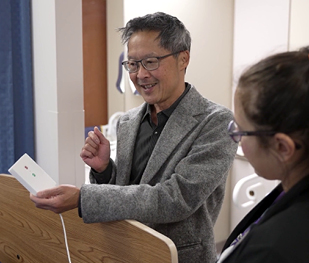Adopting New Technologies in Long-Term Care
A current Centre of Excellence study helps meet growing demand among LTC managers and operators for effective guidance on the adoption of new technologies. Factors Affecting Managers' Technology Adoption Decisions in Long-Term Care Homes: A Canadian Exploratory Study Post-COVID-19 Pandemic appears in the online version of The Journal of Aging & Social Policy, a peer-reviewed publication.
Many technologies have the potential to improve both quality of care and operational efficiency in LTC homes. When it comes to the adoption of new technologies, however, the LTC sector lags significantly behind other sectors, such as healthcare. With technology companies increasingly marketing to the LTC sector, managers and operators of LTC homes have expressed a need for effective decision-making tools. The Centre of Excellence study helps meet this need.
“Part of what makes this study both unique and valuable is that it focuses on managers and directors,” says Danielle Cruise, lead author of the study and currently a PhD candidate at the University of Ottawa's Telfer School of Management. “Many studies evaluate individual technologies used in long-term care homes, but this is the first to focus on how homes decide whether to adopt particular technologies.”
The study identifies the top five decision-making factors as: availability of funding; impact on workload and efficiency; value proposition (i.e. what problem does the technology propose to address?); ease of use; and impact on resident outcomes.
To complete the study, Ms. Cruise and her team (Mirou Jaana, Professor, Telfer School of Management; Danielle Sinden, Director Centre of Excellence; and Linda Garcia, Professor Emerita, University of Ottawa) recruited a panel of 19 managers of LTC homes in Ontario. All had previously been approached by vendors seeking to interest them in one or more technologies. Panelists completed a series of questionnaires to identify and rank decision-making factors. After initially identifying a total of 102 factors, the panelists whittled the list down to the 27 most common factors, then ranked them in order of importance.
“The number and variety of technologies on the market that promise to improve long-term care will only continue to grow,” says Danielle Cruise. “This study provides managers and directors with some of the support they need as they consider which ones are right for their home.”

Patrick Tan, Esprit-ai CEO, demonstrates their technology that combines motion sensors, transmitters and software. This technology aims to safeguard residents who often get up in the middle of the night.
Download Community Report